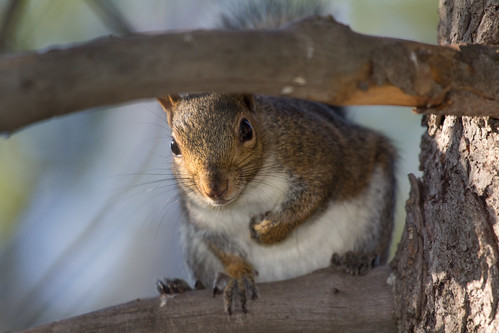In the past few weeks, I’ve been doing quite a bit of
traveling in Wisconsin with my now 6-month-old puppy Pip. From the start, she’s
been perfect in the car—I suspect it’s because we drove 500 miles from her
breeder’s home in Chicago when she was just 11 weeks old, and quickly started
taking other trips, so she thinks that’s everyday life for a birding dog.
She’s
perfectly content to curl up in her little car/airplane carrying case for the
duration. Most of the time I don’t even have to keep it zipped—she likes being
able to sit up and to get petted as we go along.
When I stop for gas, a bathroom
break for me, or a quick errand, she doesn’t seem to mind waiting. Of course, I
don’t press my luck or her patience, so I stop as often as I can to give her
exercise and play, but we’ve done as much as 3 hours of solid driving without a
break a couple of times, with nary a complaint. She particularly enjoys being rewarded after a long drive.
So far we’ve traveled 6900 miles in the car together. Pip
has been to 6 different states and I’ve seen 198 species with her at my side.
She quickly adapted to a retractable leash, which I can hook with a carabineer
to my belt so my hands are free to use my binoculars or camera. She’s tiny, so
the leash is attached to a harness rather than a neck collar.
She almost immediately
figured out that the leash only goes out so far, and she virtually never tugs;
she stops right before it would start pulling her and waits for me to catch up.
She also magically stays on the trail, so I don’t have to worry about her
messing with or accidentally trampling nests or damaging habitat. When other
people or animals are about, I pull the leash in to keep her at my side, and
she seems cool with that, too. I’ve never before had a self-training dog.
There
are some birding situations in which she must be left behind or carried rather
than walked. When birding along the Park Point beach this spring after Piping
Plovers were spotted there, I popped Pip into a special shoulder bag—it’s so
fun for dogs to run on beaches, but the plovers’ needs for a safe nesting spot
were far more important.
 |
| I kept Pip in her bag on the beach OUTSIDE the roped off area. We didn't enter the area beyond the rope at all. Photo by Erik Bruhnke |
 |
She watches and tries to catch butterflies, moths, ants, and all kinds of other insects, but can easily be distracted from entomological pursuits when a bird enters the scene.
Over my life, I’ve had three dogs specifically bred for
waterfowl or upland bird hunting: a springer spaniel, a spaniel/black lab
cross, and a golden retriever. Not one of those ostensible bird dogs focused on
birds in every day life the way Pip does. She searches through trees when she
hears a robin or other loud singer, tracks flying birds in the sky, and clearly
watches birds in the feeder and on the lawn.
 |
Pip is more of a general naturalist than I am. She pays
close attention to squirrels of course. Our backyard squirrels worked out her
speed and motivation levels from the start, and wait until she’s in full pursuit
before they saunter away. A couple of times, a squirrel barely made it to the
tree—they worked out all the timing when Pip was a tiny puppy. She grows
faster and more focused by the week, and sometimes it takes them a while to adapt. But they still have the upper paw—indeed,
several weeks ago, one chased her onto our porch, probably when she got too
close to one of its babies. She doesn’t have much fire in her belly when it
comes to them—my guess is that she’s thinking of them as equals to play with rather than prey.
One night two weeks ago when we were in Illinois, she made a
delightful discovery—lightning bugs! One lit up about a foot in front of her
nose, and her head jerked back in astonishment. Suddenly she was seeing them
lighting up here and there throughout the yard, and started leaping up toward
one and then another, hopping every which way, the way I’d envision a bunny in
a marijuana patch.
Pip’s reaction to birds hasn’t been quite so exuberant. Her
favorite species seems to be the Rock Pigeon—four of them visit our yard a lot,
and she watches them closely. She also pays attention to robins, and to Blue
Jays if they’re squawking. Geese and ducks seem mysterious and cool, and tinier
birds hold her interest, too, though they don’t catch her attention as
consistently. I’m sure she’s seen only a fraction of the 198 species I’ve put
on her life list. That list is obviously for me, not her, helping me to keep
track of all the birding experiences I’ve had with her at my side.
Some of my radio listeners have complained over the years whenever I talked about birding with a dog. But birding with a buddy enhances many birding experiences, as long as it’s the right buddy in the right situation. And it looks like Pip is going to be the right birding buddy for me for a long time to come.
Some of my radio listeners have complained over the years whenever I talked about birding with a dog. But birding with a buddy enhances many birding experiences, as long as it’s the right buddy in the right situation. And it looks like Pip is going to be the right birding buddy for me for a long time to come.






